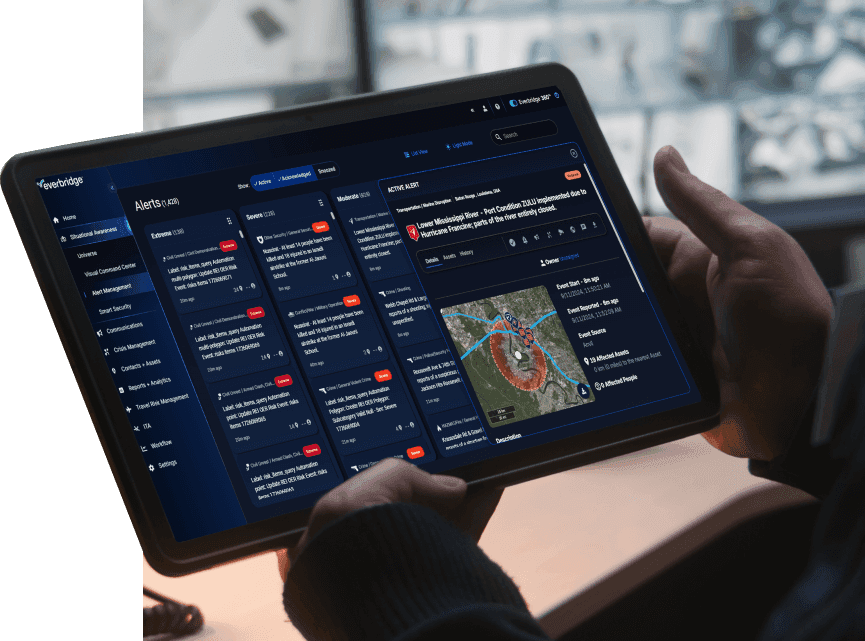Workplace safety is a critical aspect of any organization, ensuring the well-being of employees and the smooth operation of daily activities. Regular safety meetings and tabletop exercises are essential for reinforcing safety protocols, keeping everyone informed about the latest safety guidelines and best practices.
So here are 35 comprehensive workplace safety topics for meetings, designed to enhance your team’s knowledge and commitment to safety.
How to make your safety talks more engaging
Ensuring that workplace safety talks are interactive and relevant with day-to-day examples will make them more engaging and effective. Some of the most memorable safety moments are short, focused, and relevant so that workers can easily apply the advice immediately and recall it in the long term.
Interactive approach
Move beyond monologues. Encourage participation through quizzes, case studies, or role-playing. Engage employees by asking questions and involving them in discussions. Make sure no one is left out and reward engagement (for example, snacks and gift cards).
Real-life examples
Share relatable stories or past incidents within your organization. Personal anecdotes resonate with employees and make safety concepts more tangible. Ask employees to share their experiences within the organization or in previous roles. Discuss what safety procedures could have changed these outcomes.
Visual aids
Use infographics, videos, or images to illustrate safety points. Visual content captures attention and enhances understanding. Share these visual aids after safety talks via email and other communication channels so people can revisit them to keep the knowledge fresh.
Variety
Change the format of safety talks. Sometimes, a short video works better than a lengthy presentation. Mix it up to maintain interest. Survey employees to ask them what their preferred formats are, and what could be done to make your workplace safety talks more engaging.
35 Workplace safety topics
Here are a variety of safety topics you can use to keep safety at the forefront of everyday operations. Remember to tailor your safety talks to the specific work objectives and conditions that are most relevant to your employees.
Health hazards
1. Chemical safety and hazards
Discuss proper handling, storage, and disposal of chemicals. Emphasize the importance of using appropriate Personal Protective Equipment (PPE) and understanding Safety Data Sheets (SDS).
2. Carbon monoxide
Educate employees on the dangers of carbon monoxide, symptoms of exposure, and preventive measures.
3. Heat stress
Discuss the risks of heat stress, including symptoms and prevention strategies such as hydration and acclimatization.
4. Cold stress
Discuss the risks associated with cold stress and how to mitigate them, including proper clothing and work/rest cycles.
5. Fatigue
Highlight the dangers of fatigue and its impact on safety. Discuss ways to manage fatigue through adequate rest, hydration, and workload management.
6. Noise and hearing loss prevention
Review noise control measures, such as PPE and engineering controls, to prevent hearing loss.
7. Respiratory protection and infection
Cover the proper use of respiratory protection to prevent inhalation of harmful substances and reduce the spread of infections.
8. Burn prevention and treatment
Discuss ways to prevent burns in your workplace and how to provide immediate treatment if burns occur.
Physical safety
9. Emergency exits
Ensure everyone knows the location of emergency exits and understands the importance of keeping them unobstructed.
10. Personal protective equipment (PPE)
Discuss the types of PPE required for different tasks and ensure employees know how to use them correctly.
11. Electrical safety
Review electrical safety practices, including proper equipment use and what to do in an electrical emergency.
12. Machine safety
Ensure all machinery is used safely by discussing operating procedures, regular maintenance, and the importance of safety guards.
13. Vehicle safety
For employees who drive as part of their job, discuss safe driving practices, including severe weather driving and vehicle maintenance.
14. Confined spaces
Discuss entry procedures, monitoring, and rescue plans for working in confined spaces.
15. Ladder safety
Discuss safe ladder practices, including proper setup, use, and storage.
16. Slips, trips, and falls prevention
Review housekeeping practices, proper footwear, and hazard identification to prevent slips, trips, and falls.
17. Ergonomics
Promote ergonomic practices to prevent musculoskeletal disorders. Discuss the importance of proper posture, equipment positioning, and taking breaks to reduce strain.
Environmental safety
18. Emergency preparedness and response
Outline the procedures for various emergencies, including evacuation routes, assembly points, and communication plans.
19. Hurricane and tornado protocol and response
Review the specific protocols for severe weather events, including shelter-in-place procedures and emergency kits. Download our hurricane preparedness checklist.
20. Storm and flood response
Prepare for natural disasters by discussing your organization’s response plans, emergency kits, and communication strategies.
21. Fire response
Review fire prevention measures, the use and location of fire extinguishers, and evacuation procedures.
For areas prone to wildfires, discuss evacuation plans, air quality monitoring, and personal safety measures.
23. Winter weather
Prepare for winter weather by discussing safe practices for snow and ice removal, proper clothing, and driving in winter conditions. Download our winter storm preparedness checklist.
24. Waste management and recycling
Discuss proper disposal and recycling methods to maintain a safe and clean work environment.
25. Ventilation
Ensure proper ventilation to reduce the risk of respiratory issues and improve overall air quality.
Physical wellbeing
26. Physical wellbeing
Promote healthy practices, including proper lifting techniques, stretching exercises, and maintaining physical fitness.
27. Mental health
Address the importance of mental health in the workplace. Discuss stress management techniques, available resources, and creating a supportive environment.
28. Stress management
Discuss techniques for managing stress, including time management, relaxation techniques, and share available support resources.
29. Substance abuse
Address the impact of substance abuse on workplace safety and the importance of a drug-free environment.
30. Medical and first aid
Review basic first aid procedures and ensure employees know the location of first aid kits and how to use them.
31. Hand hygiene and protection
Emphasize the importance of hand hygiene to prevent the spread of illness and discuss the proper use of hand protection for various tasks.
Workplace culture and compliance
32. Workplace violence
Implement strategies to prevent workplace violence. Discuss warning signs, reporting procedures, and ways to de-escalate situations.
33. Active assailant
Prepare employees for the unthinkable with active assailant drills. Discuss run, hide, fight strategies and emergency communication plans.
34. Bullying and harassment
Address bullying and harassment in the workplace by discussing company policies, reporting procedures, and creating a respectful work environment.
35. Reporting accidents and hazards
Encourage prompt reporting of incidents and near-misses to help identify patterns and prevent future occurrences. Explain the reporting process and the importance of transparency.
For more workplace safety topics, check out the OSHA site.
Creating a safer workplace
Workplace safety is an ongoing process that requires regular attention and continuous improvement. By addressing relevant topics in your safety meetings, you can create a safer workplace environment and ensure that all employees are informed and prepared to handle various safety concerns
When employees actively participate in discussions, share experiences, and learn from one another, they collectively foster a safety-first mindset. A strong safety culture leads to fewer accidents and better overall well-being.
To further enhance your workplace safety measures, watch our webinar on workplace safety, where we are joined by industry experts, as they outline strategies to safeguard your organization and employees from modern-day risks.





